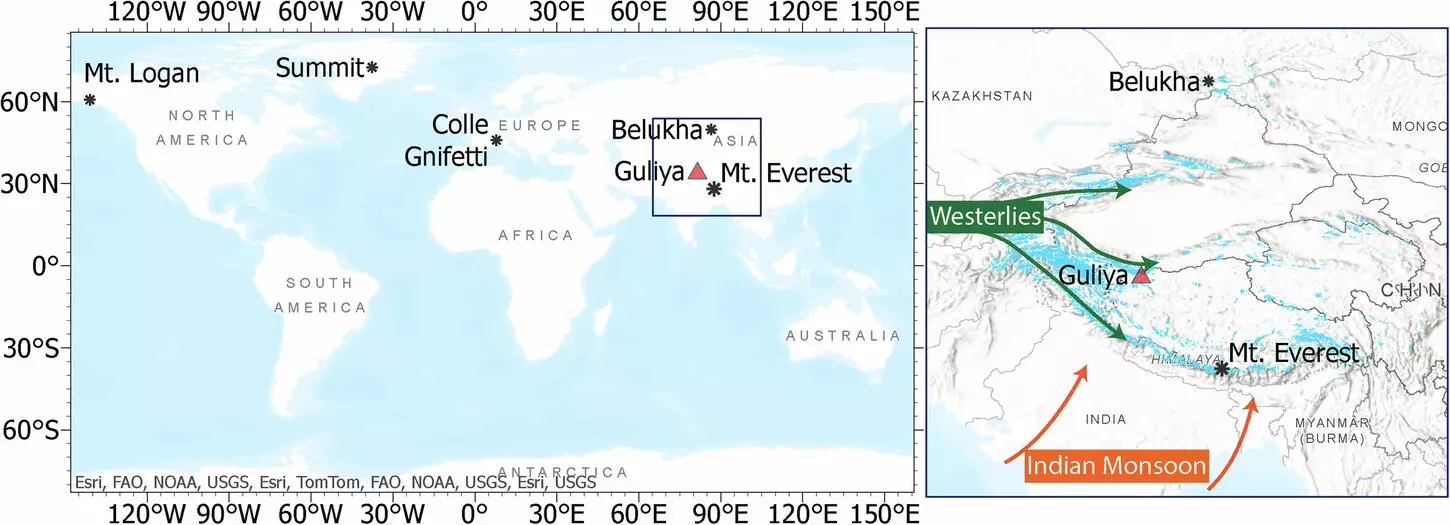In a groundbreaking study that combines geology with environmental science, researchers have uncovered startling evidence of lead pollution infiltrating some of the most pristine landscapes on Earth. Led by Texas A&M University geologist Dr. Franco Marcantonio, a collaborative research effort has traced the origins of this contamination to human activities, specifically analyzing the Guliya Ice Cap situated on the Tibetan Plateau. This research not only highlights the extensive reach of anthropogenic influences but also serves as a grim reminder of the broader implications of industrialization and pollution on global ecosystems.
Nicknamed the “Roof of the World,” the Tibetan Plateau holds the distinction of being the highest and largest of all the planet’s plateaus. Spanning an area four times greater than Texas, this remote region largely situated in southwestern China is cradled by the majestic Himalayas. Its altitude and geographic position make it a critical observation point for studying climate change, glacial dynamics, and environmental health. Understanding the history of lead contamination in such a vulnerable area sheds light on the intricate interplay between industrial advancements and ecological well-being.
The crux of the study revolves around the alarming discovery of lead pollution becoming pronounced in the Guliya Ice Cap since 1974, with the peak of contamination occurring between 2000 and 2007. Lead isotope analysis conducted at Texas A&M’s renowned Williams Radiogenic Isotope Facility revealed that emissions from Chinese gasoline were at the heart of this pollution. Prior to 2007, leaded gasoline was widely used in China, contributing to hazardous atmospheric lead levels that extended far beyond urban centers and deeply into remote landscapes, underlining the invisible reach of modern industry.
Lead’s classification as a neurotoxin raises significant concerns, especially given its newly discovered presence in remote regions. Dr. Marcantonio emphasizes the implications of this contamination, stating, “Lead’s presence in remote areas like the Tibetan Plateau shows the vast reach of human impact on the environment.” The potential for lead to interfere with neurological development in both humans and wildlife accentuates the urgency of the findings. The impacts of lead exposure can disrupt entire ecosystems, leading to an array of health issues that could compromise the delicate balance of these isolated environments.
Learning from Historical Records
The innovative approach taken by the research team involved examining ice core samples that provide a historical record spanning up to 36,000 years. These ice layers serve as a time capsule, allowing researchers to draw comparisons between pre-industrial and modern lead levels. This analysis reveals not just the severity of recent pollution, but also illustrates how human actions have altered the environmental landscape over millennia. By understanding past atmospheric circulation patterns, the research aids in comprehending the trajectory of environmental change ahead, which could guide future mitigation strategies.
This pioneering research emphasizes the pressing need for monitoring pollutants in remote ecosystems. As the climate continues to change and human populations expand, the implications of such contamination extend globally. The research team, led by Dr. Marcantonio, aims to broaden this investigation to monitor lead’s movement beyond glaciers, including its potential transfer into oceanic systems and even the human body. This offers a more comprehensive understanding of environmental health and the intricate web of pollution that binds various ecosystems together.
As the ramifications of industrial pollution become increasingly evident, the importance of research like that conducted by Dr. Marcantonio and his colleagues cannot be overstated. Their findings encapsulate a critical message: the time for action against pollution is now. With continued research and global cooperation, it is possible to mitigate the effects of human activity on fragile ecosystems and pave the way for a healthier future. Understanding the impacts of lead and other harmful contaminants not only provides insights into our past but also offers a roadmap for protecting our planet’s future.

